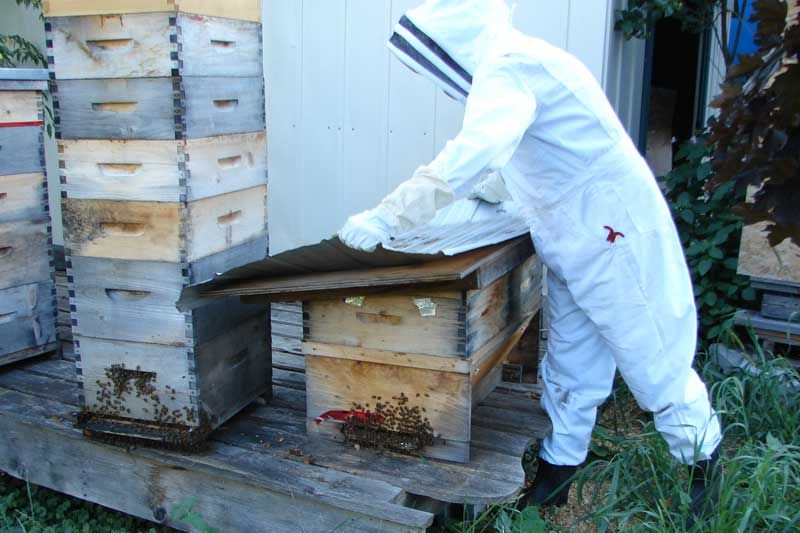Malcolm Callister | Oct 13, 2016
I met Kevin Wenkoff, of Bellrock, South Frontenac, at his apiary beyond their wild flower and herb garden. Kevin is a full-time school teacher and keeps a hobby apiary of four colonies of Russian honeybees on his two-acre property. Any honey that he collects he uses himself or gives away to family and friends.
I wanted to understand the work involved in keeping bees, so, leading me into his office he simply said, “OK, let’s suit up and go and take a look.” Dressed for a moon landing, we walked in that clumsy style of Neil Armstrong.
Dedicated beekeepers stress that it is the hands-on experience of keeping bees that is important in learning about these insects. Having bees on your hands and watching their daily dance conveys more information about the colony condition than reading.
Wenkoff had a goose feather for moving any bees out of the way or off my hands. It does not harm or frighten the bees - and if you have any exposed bare skin you do not want to frighten 20,000 bees.
Wenkoff spends about two hours a week working with and talking to his bees, and many more hours just watching and enjoying the relaxation that they provide. It is not all fun, however. Two years earlier he experienced a winter die-off of a complete colony and lost 12,237 bees.
When asked how he estimated that number, he replied, “It’s not an estimation. I asked my grade 6/7 French class from Prince Charles School in Verona if they would like to do some real math in my apiary. We organised a supervised school trip; most of the class came out to count dead bees in February”.
The students had to count and speak in French. One boy found and identified the Queen.
Wenkoff believes that his winter die-off was a natural disaster. It had been very cold that year and he had not added sufficient insulation.
His colonies have bounced back. This summer’s good nectar flow and new strong queen bees have helped. He will assist by ensuring that he leaves plenty of nectar and honey for them to feed off during the winter and he will add insulation to the hives. He is also considering a winter feeding program if he still has one weak hive late this fall.
Wenkoff is trying to allow the bees to survive naturally and he does not replace the colony queen bees. He allows the colony to make that decision, and they do.
Bees need to be creative; they are builders and foragers of nectar. Wenkoff does not give them a complete ready-built home with plastic honeycombs; rather, he encourages the bees to build their own honeycomb from a very small basic beeswax starter, on the frames. Commercial beekeepers cannot afford the time for this and insert a complete plastic backing shaped as the hexagonal honeycomb base on a frame.
Wenkoff’s approach to beekeeping is known as the Biodynamic method. This is not as cost-effective as that employed in commercial beekeeping, but this approach could be breeding stronger, more infection-resistant bees. Only time will tell.
More Stories
- The Sun Shines On The Parham Fair
- Creating Your Own Weather, Forever and Ever
- Silver Lake Pow Wow Set For A Big Year
- South Frontenac Receives Substantial Provincial Grant for their Verona Housing Project
- South Frontenac Council Report - August 12
- Dumping To Be Curtailed At Loughborough Waste Site
- Central Frontenac Inching Towards Increasing Severance Opportunities
- Addington Highlands Council Report - August 12
- Addington Highlands Council Report - August 5
- Addington Highlands Council Report - August 12

